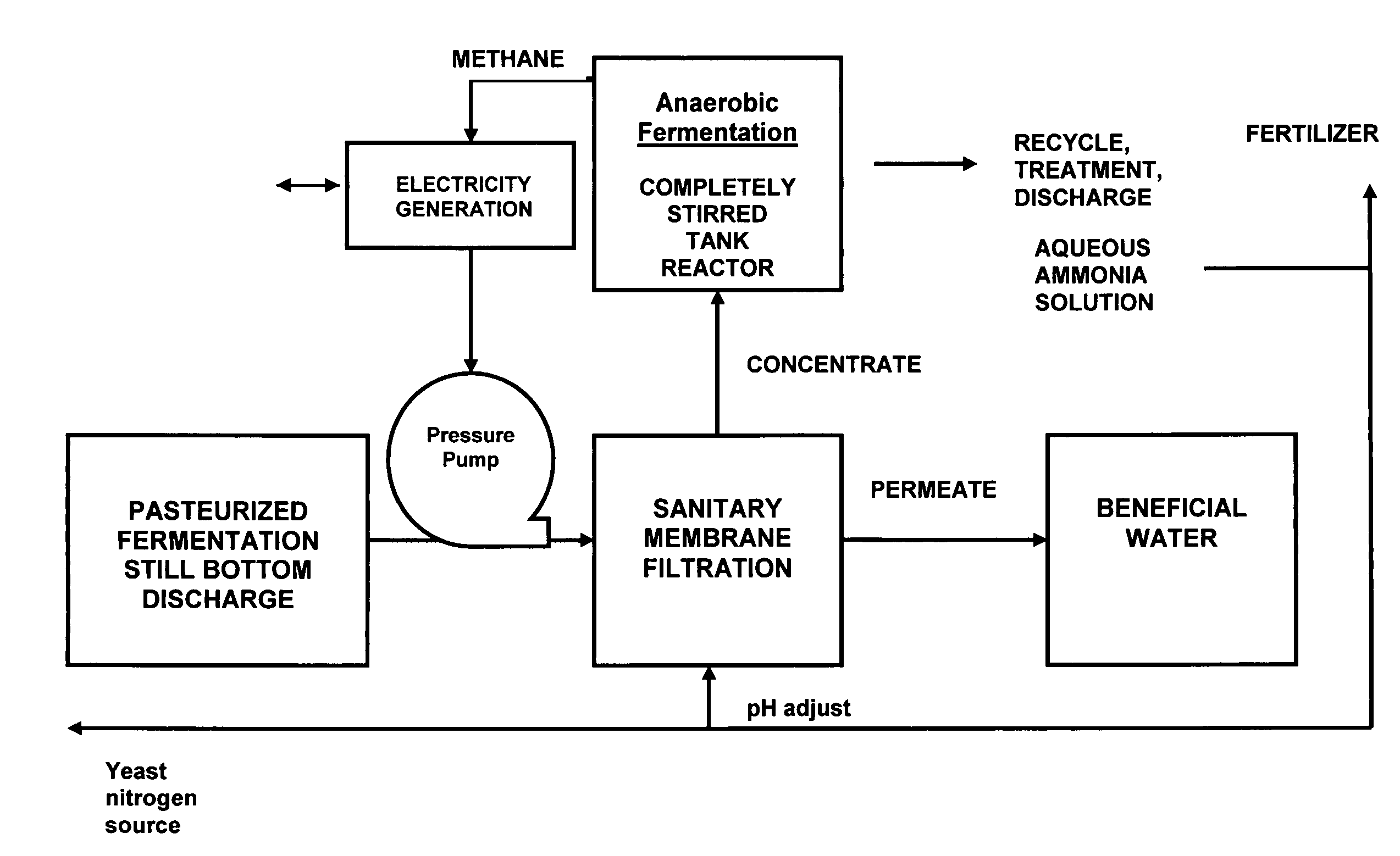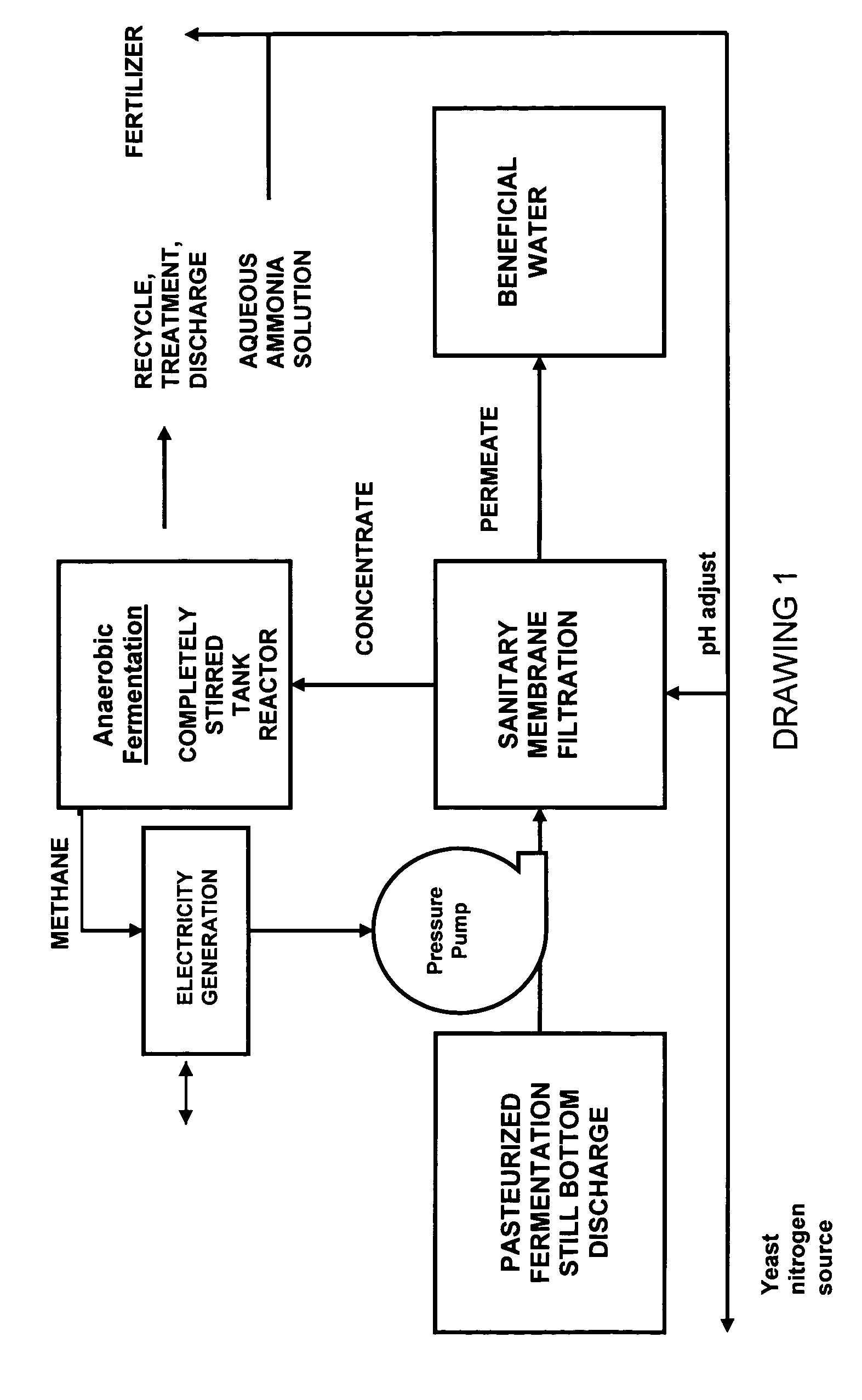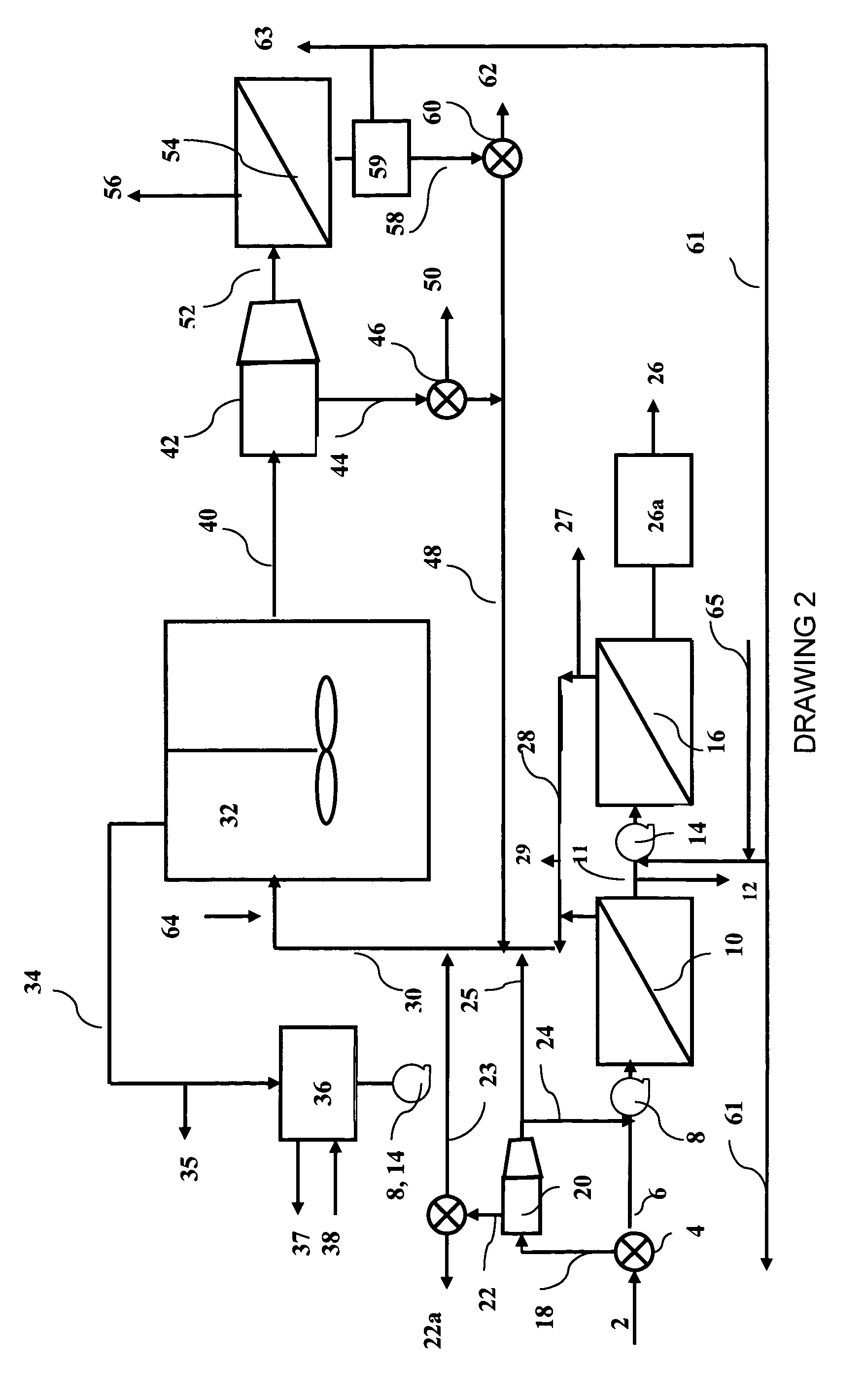Fuel and by-products from fermentation still bottoms
a technology of ethanol fermentation and by-products, which is applied in the direction of water/sewage treatment, water/sewage treatment by degassing, membranes, etc. it can solve the problems of not meeting the combined conditions necessary to separate fermentation still bottoms, not beneficially using methane fermentation for energy recovery, and discharge of ultrafiltration to sewers. , to achieve the effect of improving the mean cell residence time and improving the pressure filtration of the liquid stream
- Summary
- Abstract
- Description
- Claims
- Application Information
AI Technical Summary
Benefits of technology
Problems solved by technology
Method used
Image
Examples
Embodiment Construction
—DRAWING 1 AND 2—PREFERRED EMBODIMENT
[0037]Referring now to the drawings there is shown a conceptual diagram of the preferred embodiment of the process and system Drawing 1 for still bottom treatment to recover fuel and beneficial water in accordance with the present invention and a specific schematic diagram Drawing 2 of the method. As shown a discharge stream 2 of still bottoms is issued from an alcohol fermentation and distillation facility, not shown, at temperatures greater than 70 C and less than 100 C constituting a pasteurized state, through appropriate piping. Though not necessarily captured within this temperature range, the discharge should be maintained sanitary and preserve the characteristics of the spent yeast cells and cell parts, metabolites, fermentation byproducts, and non-fermentable starch and sugar feedstock residues without biological degradation or microbial contamination. Starch and sugar feed stocks can consist of any type of fermentable carbohydrate in the...
PUM
| Property | Measurement | Unit |
|---|---|---|
| molecular weight | aaaaa | aaaaa |
| inlet pressures | aaaaa | aaaaa |
| molecular weight | aaaaa | aaaaa |
Abstract
Description
Claims
Application Information
 Login to View More
Login to View More - R&D
- Intellectual Property
- Life Sciences
- Materials
- Tech Scout
- Unparalleled Data Quality
- Higher Quality Content
- 60% Fewer Hallucinations
Browse by: Latest US Patents, China's latest patents, Technical Efficacy Thesaurus, Application Domain, Technology Topic, Popular Technical Reports.
© 2025 PatSnap. All rights reserved.Legal|Privacy policy|Modern Slavery Act Transparency Statement|Sitemap|About US| Contact US: help@patsnap.com



